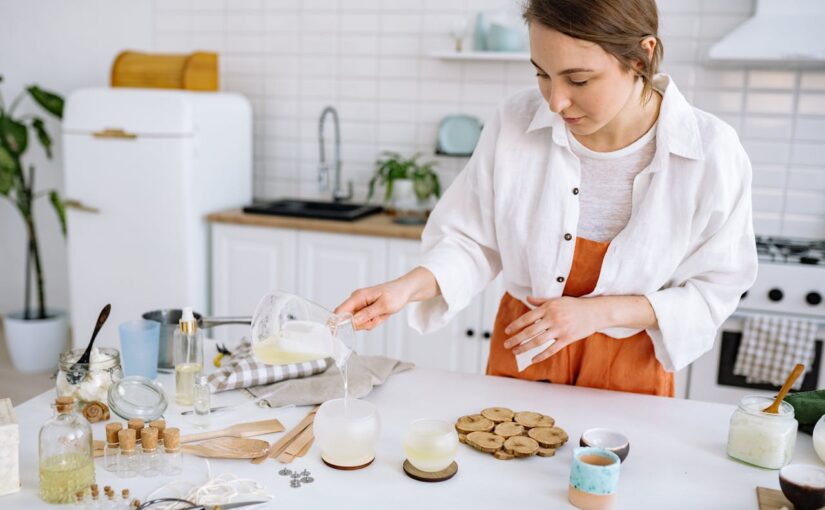Essential oils, revered tools in perfumery, cosmetics, and integrative health, are overdue for their moment in gourmet kitchens. For those who have mastered their chemistry, safety, and subtlety outside the realm of food, translating these potent botanical concentrates into culinary form is a practice saturated with possibility, layered flavor, precise dosing, and even bioactive complexity. Cooking with essential oils is not simply about swapping fresh basil for a distilled drop; it’s an utterly different manipulation of essence where the chef orchestrates both taste and therapeutic undertones.
Parsing the Molecular Palette
The advanced practitioner understands that not all essential oils are fit for gastronomic purposes. Even among those designated GRAS, analytical nuance is key. Culinary application favors monoterpenes and aldehydes over more volatile ketones or polyphenolic fractions, which can veer towards bitterness or toxicity at scale. Fastidious sourcing, GC/MS batch analysis, transparency on extraction protocols, minimal carrier dilution, is non-negotiable for those seeking purity and predictable behavior in food matrices.
Integration also demands a tight grip on the kinetics: some oils bloom in the aqueous phase, others integrate best when dispersed in lipid or alcohol. The volatility of eugenol, citral, or linalool creates staging opportunities, whether oils are used to finish sauces or gently opened in fat before emulsification.
The Power and Precision of Microdosage
In culinary aromatics, restraint is sophistication. A toothpick swirl of marjoram in beurre blanc can distinguish a plate without rendering the diner a test subject for acute pharmacology. The advanced cook benchmarks recipe development at the part-per-million scale, possibly employing micro-pipettes or calibrated droppers for dose-response curve mapping.
Dilution is not simply for safety, but optimization, how thymol or menthol partitions into the dish is as important as how much is delivered. Advanced emulsification using lecithin or specialized carriers allows oils to be introduced into foams, gels, and even sous vide bags with remarkable control. Understanding lipid solubility, vapor pressure, and flavor molecule persistence makes all the difference between balanced brilliance and palate fatigue.
Synergy and Layering: Beyond One-Dimensional Flavor
Expert application of essential oils is rarely soloistic. Imagine a chocolate tart: not simply “peppermint oil,” but a trifecta of monoterpene-rich peppermint, a blush of bergamot, and a whisper of wild oregano, each revealed at a different temperature and phase. This is the work of molecular gastronomy as much as herbalism.
For those versed in bioactivity, there is room for playful intent: pairing carvacrol-rich oregano oil with roasted lamb not only lifts umami but can introduce mild antimicrobial action, preserving the dish’s integrity during feasts.
Acidity, sweetness, and fat content modulate both the volatility and flavor perception of essential oils. A veteran palate knows to pre-assess both the dish’s and the oil’s load, employing pH tweaks or binding agents to ensure that the desired aromatics remain front and center but never intrusive.
Navigating Limitations and Idiosyncrasies
Even for the expert, there are caveats. The risk profile of certain oils, internal use of wintergreen, pennyroyal, or wormwood, for example, demands up-to-date toxicological literacy. Not all constituents survive heat, nor do all transform pleasantly during Maillard reactions. Sometimes, degradation products are as fascinating as the parent molecule but often not.
Seasoned cooks will also monitor cumulative exposure, particularly when serving a crowd: what is savory in a controlled amuse bouche can overpower in banquet settings. Documentation and batch consistency are vital, as is an open channel with suppliers for lot-specific sensory testing.
Recipe as Composition
Take, for example, a composed spring salad. Rather than a rote drizzle of lemon oil, consider:
- Emulsifying lemon and verbena oils in a nonaqueous base with a hint of stevia
- Finishing the greens with a vapor of pink pepper oil, misted at service for an immediate olfactory lift
- Layering culinary hydrosols in the vinaigrette for a subtler secondary aroma
Or, in pastry: introducing ginger and orange oils through a multi-stage cream infusing process, controlling time and temperature to preserve top notes and minimize bitterness.
Experimental approaches invite creativity. Essential oils can be encapsulated, aerosolized over finished plates, or even spun into edible films. Their function increasingly parallels what reduction sauces, infusions, and finishing salts once did for the ambitious chef.
Spirit, Science, and Sensory Joy
The marriage of precision and play, that slight sense of esprit, distinguishes advanced essential oil cookery from mere flavoring. Each drop is a dialogue with the food, the diners, and the ephemeral qualities of aroma and taste. Mastery brings with it permission to bend rules, riff on botanical combinations, and invite surprise.
In the hands of those who respect both the science and the serendipity, essential oils elevate kitchen craft to experiential gastronomy. They are tools for transformation: where each dish beckons with intensity, nuance, and a flash of aromatic wit.
Photo by Yan Krukau.
If your heart finds joy and inspiration here, consider supporting the work that keeps these stories blooming. Your donation, no matter the size, helps sustain authentic research, creative writing, and the spirit of sharing that connects us all.
